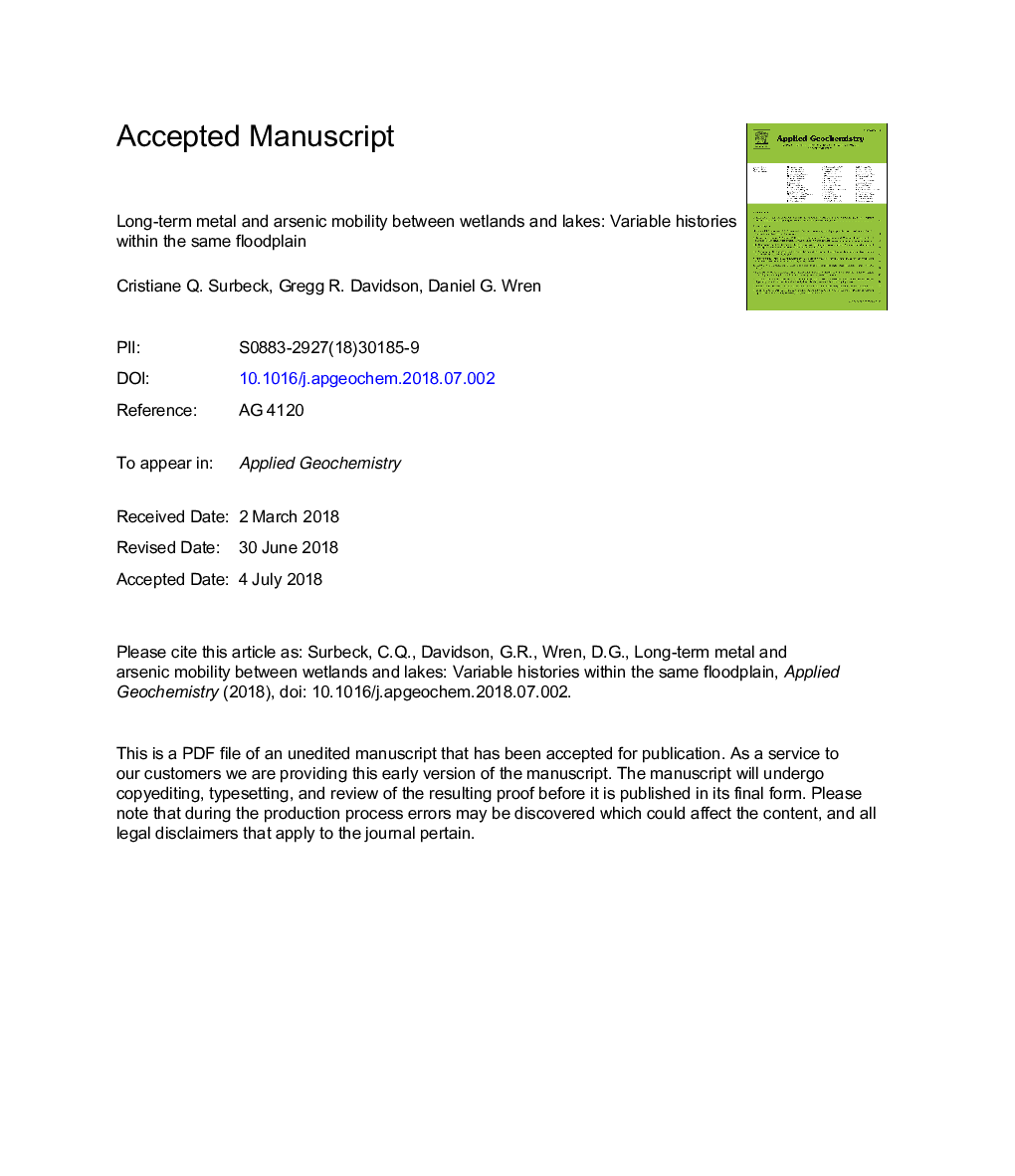| Article ID | Journal | Published Year | Pages | File Type |
|---|---|---|---|---|
| 8863045 | Applied Geochemistry | 2018 | 25 Pages |
Abstract
Short-term studies of wetlands show that wetlands scavenge pollutants, thereby mitigating the pollution of downstream water bodies. However, there are few long-term studies that demonstrate this effect. This study provides a wealth of data demonstrating that there is variable long-term mobility of metals and arsenic in wetland-lake systems. More than 900 samples were analyzed from 14 soil and sediment cores collected from six wetland-lake systems in the same floodplain. Cores were analyzed for a suite of trace elements (As, Co, Cu, Ni, Pb, Zn are reported in this paper), organic matter content, clay content, and water content. Sediment age was estimated using 210Pb and 137Cs data, facilitating comparison of element concentrations in contemporaneous wetland and lake sediments. In all six systems, sediment-laden water passes through the wetland before settling into the lake. In three of the systems, element concentrations were consistently higher in lake sediments, indicating a history of remobilization of wetland elements and subsequent deposition in lake sediments. Results in the other three lakes were variable, documenting unique long-term histories of element mobility and sequestration in otherwise similar systems.
Related Topics
Physical Sciences and Engineering
Earth and Planetary Sciences
Geochemistry and Petrology
Authors
Cristiane Q. Surbeck, Gregg R. Davidson, Daniel G. Wren,
